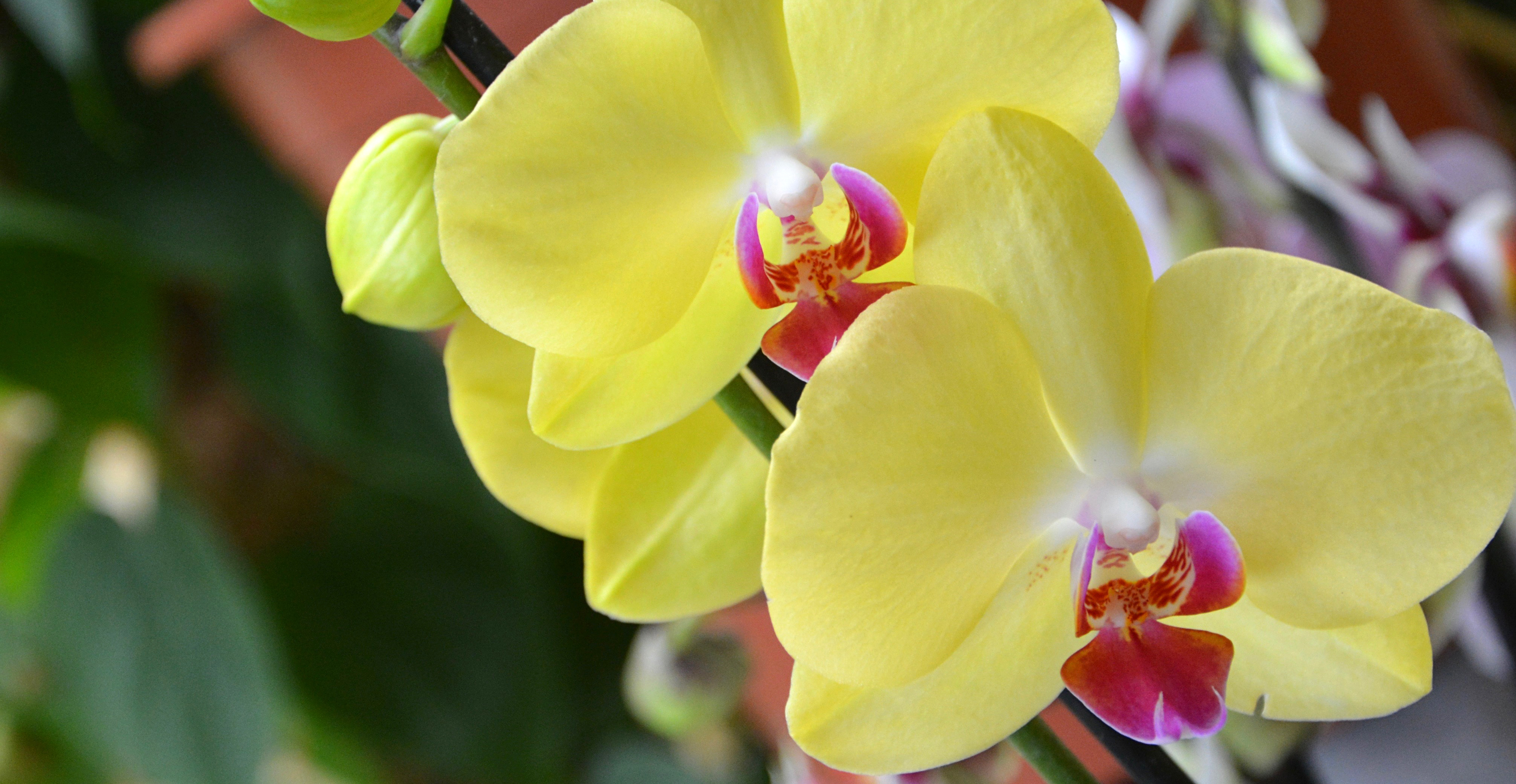
5 Tips to Taking Care of Orchids in Your Home
Orchids- Exotic and beautiful flowers, these fascinating plants add a tropical rainforest feel to your home.
If you’re an orchid enthusiast or if you’ve received an orchid plant as a gift, see below for five quick tips for growing and taking care of orchids indoors.
What type of orchid do you have?
The first step is to determine your orchid’s type, called “genus” in horticulture terms. If you know the botanical name of your orchid, great!
But if there’s no tag and you’re not sure what type of orchid you have, a visit to your local orchid society can help solve the mystery.
Once you know the type of orchid it’s time to research the requirements for:
- Light
- Water
- Temperature
- Fertilizer
- Other special needs for your particular flower.
If you plan to purchase an orchid plant from a garden center or grower, ask questions:
What are the growing requirements for your orchid (light, water, temperature, etc.)?
Inquire about the recent growing conditions for the flower. Have the orchids been sitting under grow lights? A few growing adjustments may need to be made for your orchid to adjust to its new surroundings.
For more quick tips on taking care of orchids, visit here.
What are the most common pests that affect orchid plants?
- Aphids and thrips. They like to feast on new flowers, buds, and leaves of the plant.
- Scale insects. A brownish-black crust on leaves or stems of the plant may be an indicator of scale insects.
- Mealybugs: These tiny pests chew on the leaves and stems of the flower. An indicator is small puffs of a white cottony substance present on the foliage of the plant.
- Snails and slugs: These crawlers hide in the potting soil during the day and come out at night to munch on leaves and stems of flowers. They also enjoy snacking on tender root tips of plants.
Consult with your local garden professional for the best insect control products to eliminate your orchids’ plant pests.
I placed my orchid in a window, and now it has black spots. Is it sick?
Your orchid may have received too much direct sunlight and now sporting a sunburn. The longer days of spring and summer mean an increase in the sun’s brightness and intensity so your orchid may have received too much sun.
Move the orchid back away from the window. When fall arrives, move the orchid closer to the window again. If you notice that the leaves of the orchid near the window are losing their bright green color, the plant may be getting too much sun.
I plan to grow orchids inside, under lights. What’s the best type of bulb and fixture to buy?
Ordinary fluorescent lights will work for orchids, or you can purchase more expensive fluorescent plant lights from garden centers or home improvement stores. Orchids thrive on a blend of light in the red and blue spectrums.
A budget-friendly way to achieve this is to use one cool-white (blue) fluorescent bulb and one warm-white (red) fluorescent bulb in the light fixture. Place the light fixture 1 to 2 feet above the orchids.
My indoor orchids won’t bloom. What is the cause?
The most likely cause for the orchid plant not to bloom is a lack of sufficient light. Move the orchid near a window so it will receive indirect light. A south-facing window is best to help the flowers bloom.
A Phalaenopsis orchid develops flower spikes during a scheduled four-week cool treatment. After this cooling period, raise the room temperature back to the usual 60-65 degrees F. This may stimulate your orchids’ flowers to bloom.
How can I be sure my orchid is receiving a sufficient amount of light?
While taking care of orchids check the leaf color. They should be a healthy bright green color. Furthermore, dark green leaves may mean your orchid plants aren’t receiving enough light; reddish-green leaves on orchids may indicate too much light.
Place orchids that prefer higher intensity light (Cattleyas, Dendrobiums, and Oncidiums) near a south or west-facing window. Put orchids that prefer less light (Miltonia, Phalaenopsis, and Paphiopedilums) near the north or east-facing window, or further away from the south or west-facing window.
Orchids are a beautiful plant to keep inside your home to add a hint of color to any room. Growing and taking care of orchids can be easy if you follow the guidelines and tips above.
Want to learn how to grow other flowers or plants indoors? Check out our guide on growing ferns, here.
















